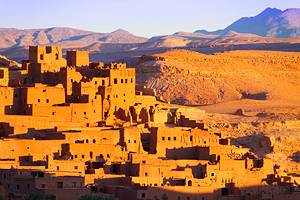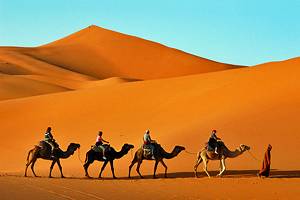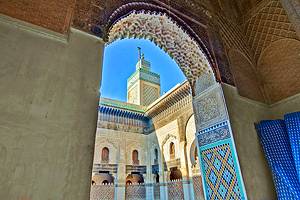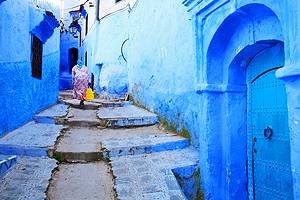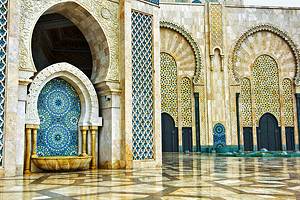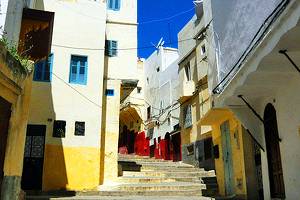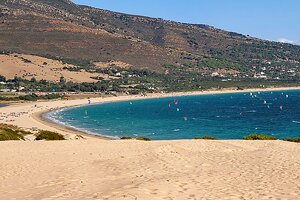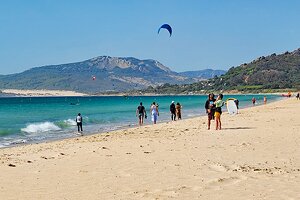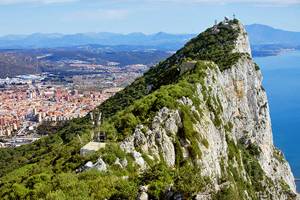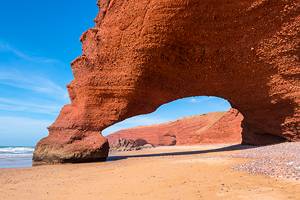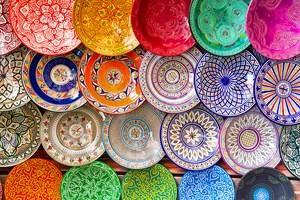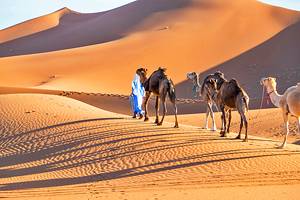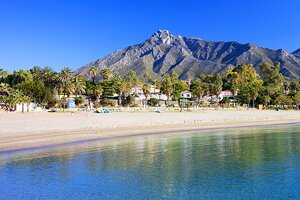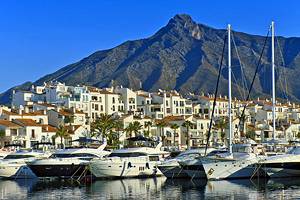Attractions & Things to Do in Meknes
Most people stop over in Meknes simply to make a trip to Volubilis, Morocco's most famous Roman-era site and one of the top historic tourist attractions in the country.
Those who decide to linger on in the city after touring the ruins will be rewarded. Meknes is one of Morocco's Imperial Cities and offers a more laid-back medina experience than in Marrakesh and Fes.
Meknes' easygoing nature means it's also one of the best places to visit and base yourself if you want to escape the bustle of Fes. The short (and regular) train network between Meknes and Fes makes it possible to visit Fes entirely on day trips from here.
In Meknes itself, the architecture of the medina, the grandiose gateway of Bab el-Mansour, and the dazzling Mausoleum of Moulay Ismail are three of the top sights. This is also the closest base to the hilltop pilgrimage town of Moulay Idriss, one of this region's most beautiful villages.
Find more sightseeing ideas with our list of the top attractions and things to do in Meknes.
Walk amid the Roman Ruins of Volubilis
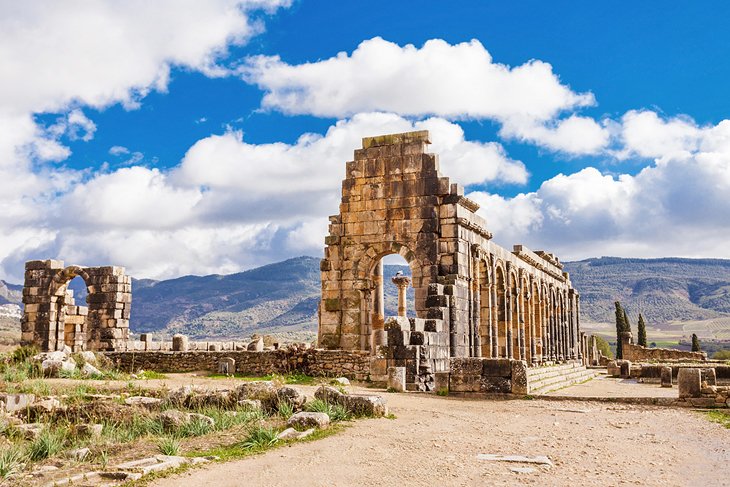
The ancient Roman ruins of Volubilis, about 29 kilometers from Meknes, are the main tourist attraction for Meknes.
This is Morocco's most famous Roman remnant and for good reason. Sitting atop a hill, with the countryside rolling out below, the surviving columns and temple fragments of Volubilis are an impressive and powerfully atmospheric site.
Although much that has been unearthed here is now on display in Rabat's Archaeology Museum, many of the gorgeous and intricate floor mosaics in Volubilis' grand Roman villas have been left in-situ, giving you a taste of the grandeur of wealthy Roman life.
The city's heyday was AD 24-285, when it served as capital for the Roman province, and most of the ruins date from this period of prosperity.
Of particular interest are the House of Orpheus, the House of the Athlete, and the House of the Labors of Hercules, with their particularly well-preserved mosaics.
Volubilis is 32 kilometers north from Meknes.
Photograph the Pastel-Painted Alleys of Moulay Idriss
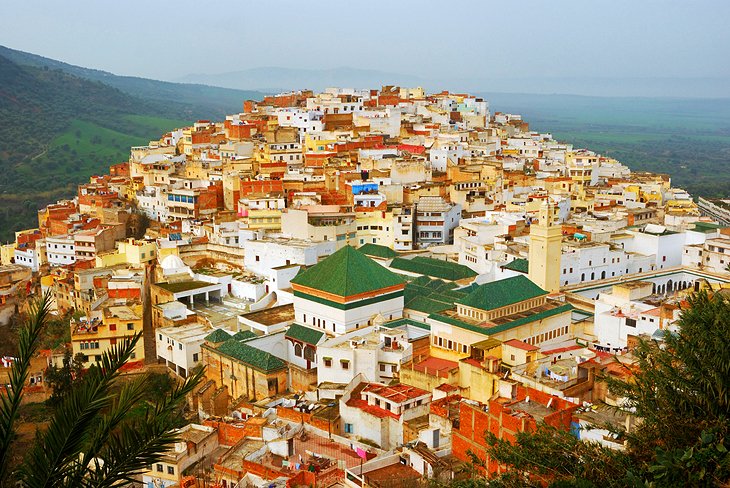
Established in AD 788, the holy city of Moulay Idriss is named after the country's most venerated saint and the Prophet Muhammed's great-great grandson, who founded the first Moroccan state.
The city is built upon the rocky spurs of the Khyber and Tazga hills, about 29 kilometers north from Meknes, with the buildings tumbling down the slopes dramatically.
For the faithful, this is an important pilgrimage center, and an annual religious festival in August attracts thousands who pitch their tents around the town.
Although non-Muslims cannot enter the shrines of the town, you can wander up through the medina (old town), with its narrow lanes all washed in pastel hues, to the hillside paths above and get amazing rooftop views of the entire settlement.
Moulay Idriss is on the same road as Volubilis, so it can easily be visited either on the way to or from the ruins.
Admire the Artistry of Bab al-Mansour
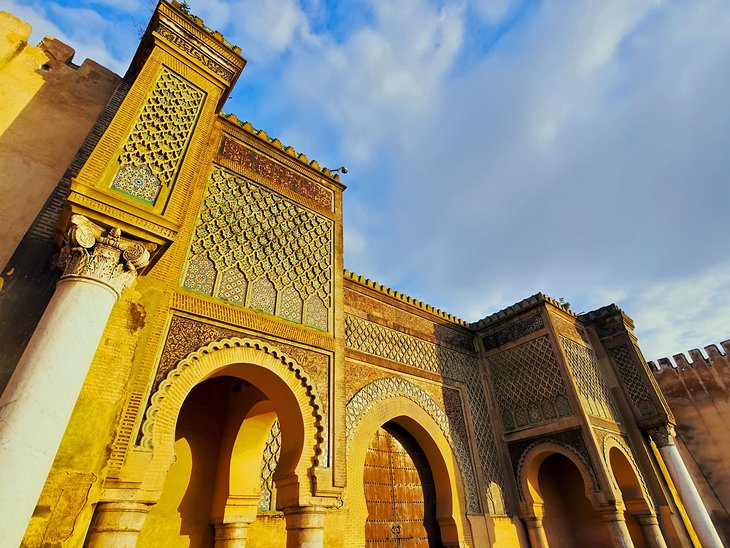
Bab al-Mansour is the main gate between Meknes' medina and Imperial City districts.
It's an immense and finely detailed structure that many architectural experts proclaim to be one of North Africa's finest examples of surviving gateways. Finished in 1732, it was built by Sultan Moulay Ismail (though completed after his reign).
The intricate architectural detail on the gateway includes lavish use of zellige tiling and stone carving work.
Today, the gate isn't actually open. Instead you enter and exit between the medina and Imperial City through a neighboring, much smaller side gate. This allows you to fully admire Bab al-Mansour's artistry unheeded by traffic.
Address: Place el-Hedim, Meknes
View the Mausoleum of Moulay Ismail
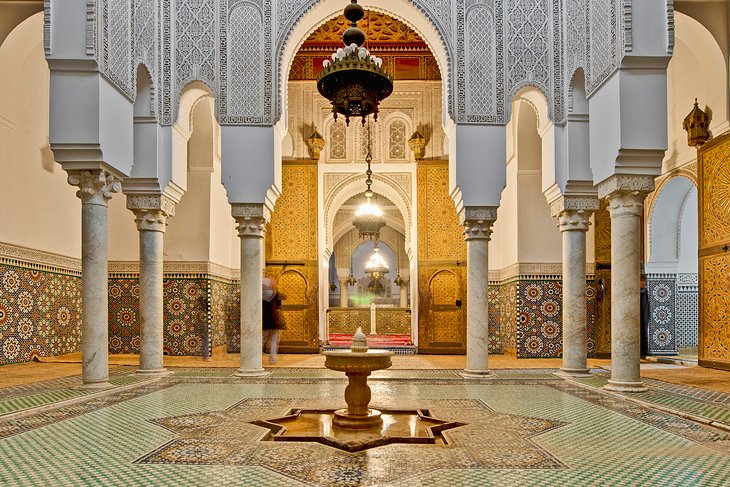
This sumptuously decorated mausoleum was built to house the tomb of Sultan Moulay Ismail, who made Meknes his imperial capital in the 17th century.
Moulay Ismail is one of Morocco's most famous rulers. It was under his reign that Morocco, as we know it today, came into being, as he managed to take territory back from both the British and Spanish.
The tomb's interior is a showcase of the glorious exuberance of Moroccan religious decoration with intricate tilework, stucco decoration, and carved stonework.
The actual mosque is not open to non-Muslims, but you can enter the outer parts of the complex and enter the tomb hall itself, which is the major attraction of the building.
Take your shoes off on entering, wear modest clothing, and don't forget to tip the guardian.
Location: Imperial City district, Meknes
Get Lost amid Meknes Medina
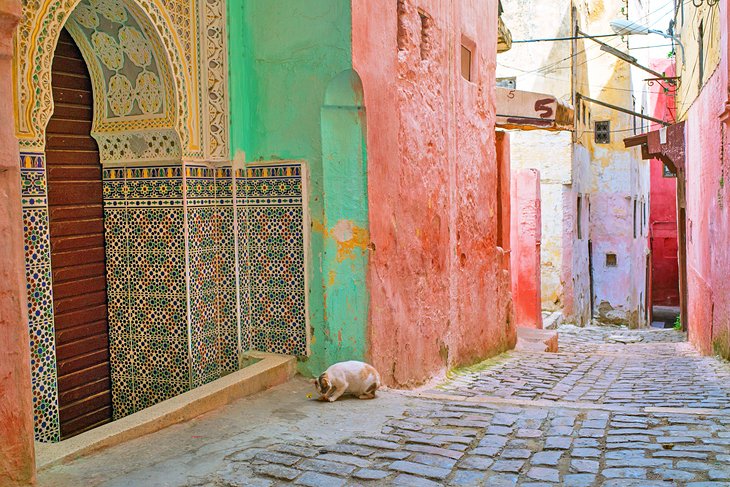
Meknes medina (Old Town) is a vibrant, bustling place full of local shopping souks and twisty lanes.
The main entrance is through Place el-Hedim, a smaller and less chaotic version of Marrakesh's Djemaa el-Fna.
For avid shoppers, this is prime hunting ground, with Souk Najarine offering plenty of textile stalls and Souk Sebbat home to many traditional Moroccan craft shops, as well as clothing and Morocco's famous slippers.
You should be able to get better prices here for handicrafts than in Marrakesh.
The 12th-century Grand Mosque with its distinctive green-tiled roof, sits right in the medina's core, making navigation easy.
The medina is still encased by its crumbling walls, which in some sections are still fully standing. They were built during the reign of Sultan Moulay Ismail, when he made Meknes his capital.
Location: Main entry off Place el-Hedim, Meknes
Explore the Architecture of the Imperial City
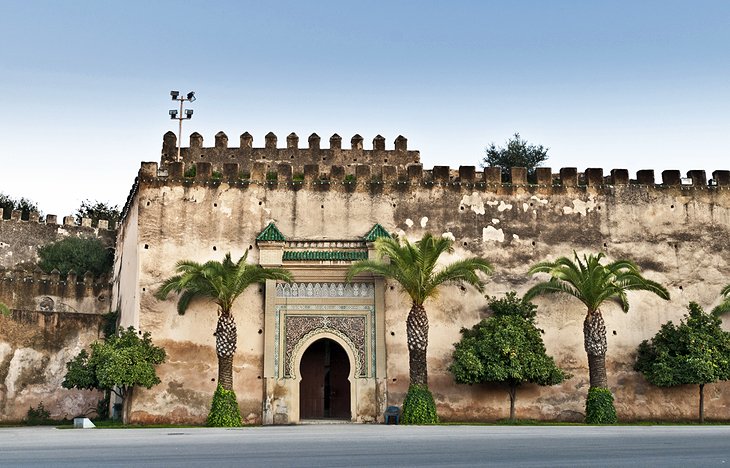
The Imperial City district in Meknes has plenty of interesting old ruins to explore, most dating from the reign of Sultan Moulay Ismail, when Meknes enjoyed its heyday as capital of Morocco.
Most visitors are here to see the Mausoleum of Moulay Ismail, but if you have time, it's worthwhile spending more time here.
The main square, once through the grand gate of Bab el-Mansour, is Place Lalla Aouda. From here, it's a short walk to the Koubat Al Khayatine. This is the city's old ambassador building, and today part of the building is open to the public, with a small photography exhibit on Meknes.
Around the corner is the Mausoleum of Moulay Ismail. Next door to the mausoleum is the ruined 17th-century palace of Moulay Ismail known as Dar el-Kebir.
Location: Main entry off Place el-Hedim, Meknes
Visit the Museum of Moroccan Art (Dar Jamai)
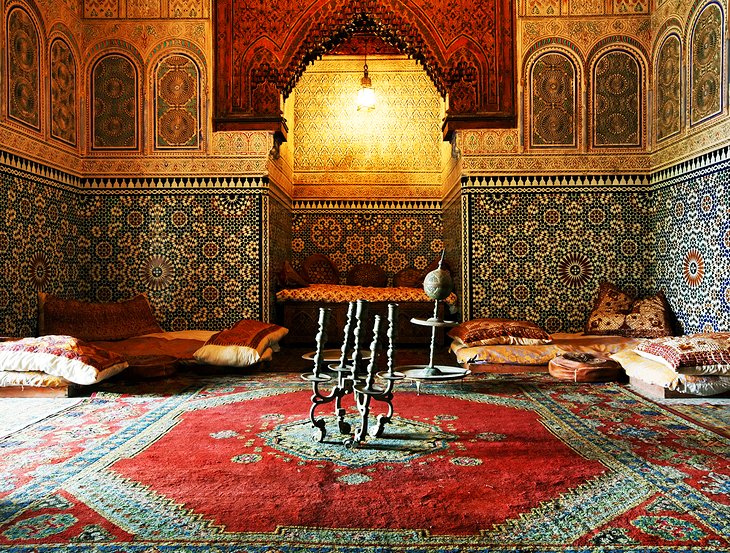
The Dar Jamai was built in 1882 as the residence of the illustrious Jamai family and was converted into the Museum of Moroccan Art in 1920.
The museum retains the rich traditional decor of painted wood and sculpted plaster that were popular interior flourishes for the 19th-century Moroccan higher-classes. There is also an exquisite Andalusian-style garden outside.
The museum is devoted to arts and crafts of the region, and there are wonderful examples of wrought ironwork and wood carving.
One of the rooms is set out as a typical example of a Moroccan reception room from the late 19th century, which will give you some idea how the rich of Meknes lived during this period.
Address: Place el-Hedim, Meknes
Climb to the Roof of Bou Inania Medersa
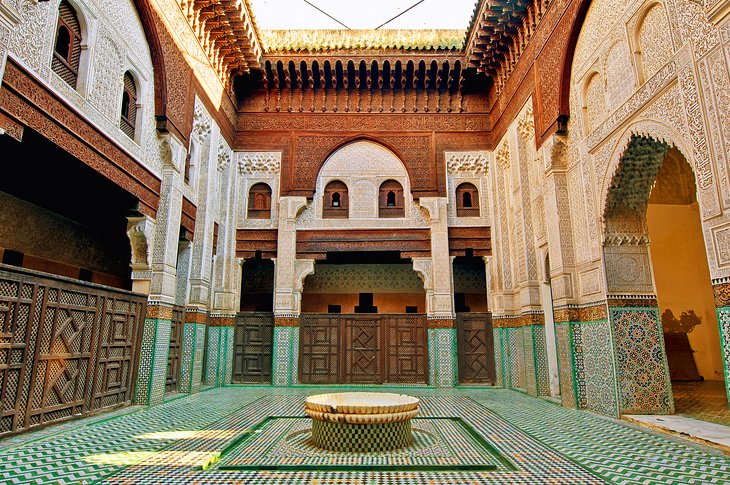
This beautiful medersa (Islamic school of learning) is hidden within the loops of Meknes' souk streets in the middle of the medina. It was founded in the 14th century.
The medersa's architecture and interior artistry has been beautifully preserved, with much of its rich zellige tile decoration still in place.
The tiny, austere cells that surround the central courtyard were once home to the students who studied theology here.
After viewing the interior, don't miss climbing up to the green-tiled rooftop. From here there are excellent views across the entire Meknes medina district and the Ville Nouvelle (new town) beyond.
Address: Souk Sebbat, Medina
Visit Heri es-Souani
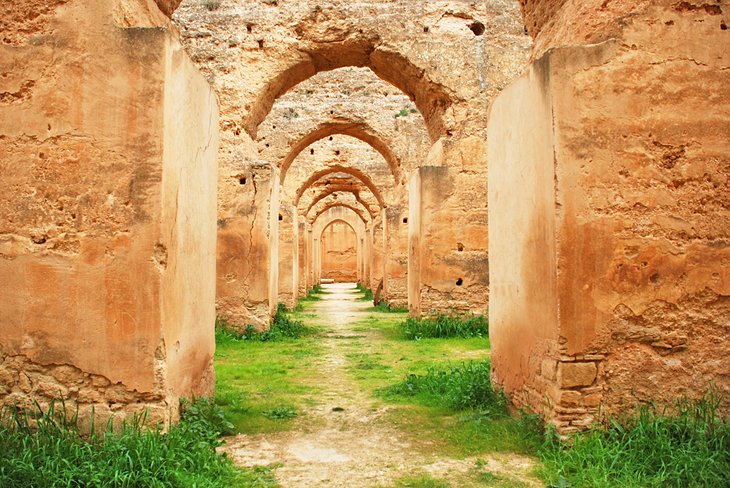
A rather long and dusty two-kilometer walk from Meknes' Imperial City district brings you to the mammoth Heri es-Souani buildings, which once served as the Imperial City's storage granaries and horse stables.
Originally up to 12,000 horses were stabled here, and the building is thought to have been much larger than the layout you can see today.
The complex has only been partially restored and is roofless, but its arched doorways and vaults are still intact.
The Heri es-Souani structure receives much fewer visitors than the sites in central Meknes, and you can often be the only person there, making it a very atmospheric area to explore.
Stroll the Souani Basin
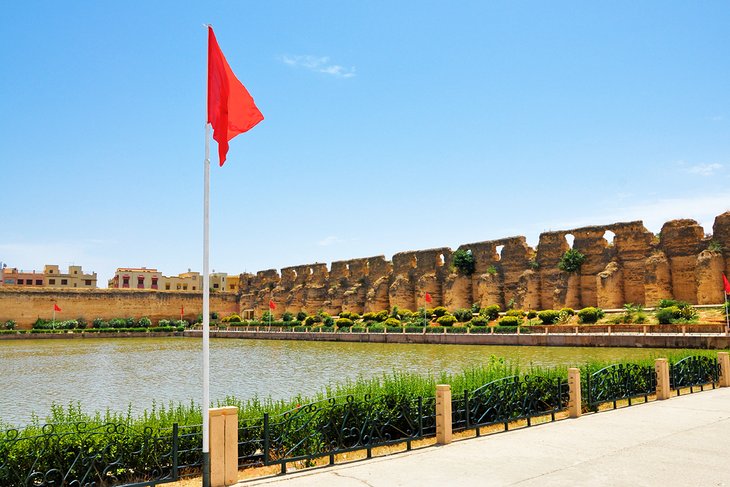
The Souani Basin (also known as the Agdal Basin) is a manmade lake that once provided water to Sultan Moulay Ismail's gardens and was part of the sultan's impressive aqueduct system that brought water into the city.
The huge exterior walls of the Heri es-Souani rim the lake's southwest side, creating an impressive backdrop. If you want to visit both, head to the Heri es-Souani first and then time your visit to the Souani Basin for sunset.
Today the lake comes alive at dusk, when local families head here to let the kids run off some steam, picnic, and stroll the pathway that runs around the lake.
History
This imperial city (the Moroccan Versailles) was built as the Moroccan capital on a fertile plain north of the Middle Atlas, near Fez, by Sultan Moulay Ismail, one of the first rulers of the Alawite dynasty that governed Morocco.
Moulay Ismail came to power in 1672 at age 26 and reigned for 55 years. When a French princess refused his hand in marriage, the young Sultan swore that he would build a palace town that would rival Versailles in splendor. He pressed 50,000 workers into service, building a series of palaces, mile after mile of walls, battlements and ramparts, and a vast marketplace.
The imperial city was completed by Moulay Ismail's son Moulay Abdallah (1727-1757) and his grandson Sidi Mohamed ben Abdallah (1757-1790).
When, in the early 19th century, Meknes ceased to be an imperial capital, it became neglected. It was not until the reign of Moulay Hassan at the end of the century that Meknes was restored and revived.
Map of Attractions & Things to Do in Meknes
More Related Articles on PlanetWare.com
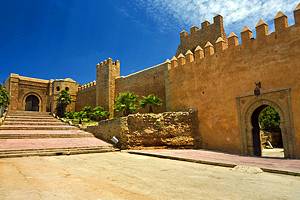
Imperial Cities: After exploring Meknes, check out Morocco's other three famed Imperial Cities. Hop on the train east to nearby Fes for a full-on labyrinth medina experience, then head west to the capital Rabat for a medina by the sea. Lastly, don't miss Marrakesh with its souks and monuments hidden within the medina's pink-toned walls.
For a complete look at places to visit in the country, see our article on the top attractions in Morocco.


